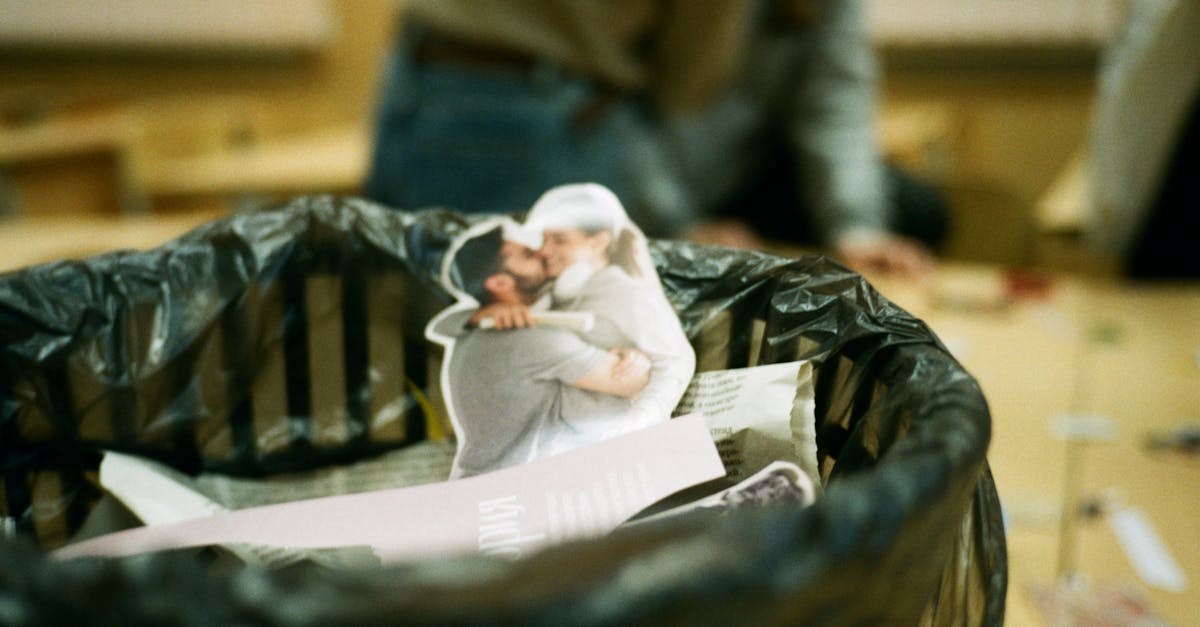Introduction
Abusive relationships are unfortunately prevalent in our society. They can take many forms, including physical, emotional, sexual, and financial abuse. Victims of abuse often feel trapped in a cycle of abuse, making it difficult to leave the relationship.
The question of whether or not an abusive relationship can be fixed is a complex one. It's important to understand the nature of abuse and its effects on victims before exploring the possibility of change.
Abuse can have serious and long-lasting effects on victims, including physical injuries, emotional trauma, and financial instability. The cycle of abuse, which includes a period of tension-building, an abusive incident, and a period of reconciliation, can make it difficult for victims to leave the relationship.
However, it's important to recognize that change is possible. Abusers may show signs of change, such as taking responsibility for their actions, seeking therapy, and making consistent efforts to improve their behavior. Therapy can be a helpful tool in addressing abusive behavior, and there are different types of therapy that may be beneficial depending on the situation.
Ultimately, the decision to stay in or leave an abusive relationship is a personal one that should be made with safety and well-being in mind. It's important to consider factors such as trust, respect, and safety when making this decision.
In this article, we will explore the possibility of fixing an abusive relationship, including the signs of change to look for, the role of therapy, and factors to consider when making this decision. We will also provide resources for victims of abuse and emphasize the importance of prioritizing safety and well-being.
Table of Content
Understanding Abuse
Abuse is a complex issue that can take many forms, including physical, emotional, sexual, and financial abuse. Victims of abuse often suffer from a range of negative effects, including low self-esteem, anxiety, depression, and even physical health problems.
One of the most challenging aspects of abuse is the cycle of abuse, which can make it difficult for victims to leave the relationship. The cycle typically involves a period of tension building, followed by an abusive incident, and then a period of reconciliation and promises to change. However, the abuser often returns to their abusive behavior, perpetuating the cycle.
It's important to recognize the signs of abuse and understand that change is possible, but it requires effort and commitment from the abuser. Positive changes may include seeking therapy, taking responsibility for their behavior, and making a genuine effort to change their actions.
Therapy can be a helpful tool in addressing abusive behavior, and there are different types of therapy that may be beneficial, including individual, couples, and group therapy. It's important to find a therapist who specializes in treating abusive behavior and who can provide a safe and supportive environment for both the abuser and the victim.
Ultimately, it's important to take time to consider whether or not a relationship can be fixed. Factors to consider include safety, trust, respect, and the abuser's willingness to change. If the relationship cannot be fixed, it's important to prioritize safety and well-being and seek support from resources such as hotlines and support groups.
Understanding abuse is the first step in addressing it. By recognizing the signs of abuse and seeking help and support, victims and abusers can work towards healing and creating healthier relationships.

Signs of Change
Abusive relationships can be incredibly difficult to navigate, and it can be hard to know whether or not change is possible. However, recognizing signs of change in an abuser can be a crucial step in determining whether or not a relationship can be fixed.
It's important to note that change in an abuser is a slow and gradual process, and it's important to be patient and consistent in observing their behavior. Some positive changes an abuser might make include taking responsibility for their actions, showing empathy towards their partner, and actively seeking help for their abusive behavior.
Consistency in behavior change is key. It's not enough for an abuser to make positive changes for a short period of time and then revert back to their abusive behavior. It's important to observe their behavior over a longer period of time to ensure that the changes are lasting.
It's also important to note that change in an abuser cannot be forced. It's up to the abuser to recognize their behavior and take steps towards change. However, if an abuser is willing to seek help and make positive changes, therapy can be a helpful tool in addressing abusive behavior.
Ultimately, it's up to the victim to decide whether or not they believe change is possible and whether or not they want to continue the relationship. It's important to prioritize safety and well-being above all else. If an abuser is not willing to make positive changes or if the relationship is too dangerous to continue, it may be necessary to end the relationship and seek support from resources such as hotlines and support groups.

The Role of Therapy
Abusive behavior is a complex issue that often requires professional help to address. Therapy can be a valuable tool in helping abusers recognize and change their behavior. It can also provide support and guidance for victims who are struggling to cope with the effects of abuse.
There are different types of therapy that may be beneficial in addressing abusive behavior. Individual therapy can help abusers explore the underlying causes of their behavior and develop strategies for change. Couples therapy can be helpful in improving communication and addressing relationship issues that may be contributing to the abuse. Group therapy can provide a supportive environment for abusers to share their experiences and learn from others who are going through similar struggles.
It is important to find a therapist who specializes in treating abusive behavior. Look for someone who has experience working with both abusers and victims of abuse. A good therapist will be non-judgmental, empathetic, and skilled in helping clients navigate the complex emotions and challenges that come with addressing abusive behavior.
Therapy is not a quick fix, and it requires commitment and effort from both the abuser and the victim. It may take time to see progress, and setbacks are common. However, with patience and persistence, therapy can be a powerful tool in helping abusers and victims heal and move forward.
It is important to remember that therapy is not a substitute for accountability. Abusers must take responsibility for their behavior and make a genuine effort to change. Victims should not be pressured to stay in an abusive relationship or to forgive their abuser. Therapy can be a valuable tool in addressing abusive behavior, but it is only one part of a larger process of healing and recovery.

Factors to Consider
When it comes to abusive relationships, deciding whether or not to stay can be an incredibly difficult decision. There are many factors to consider, and it's important to take the time to carefully weigh each one.
First and foremost, safety should always be the top priority. If you or your children are in danger, leaving the relationship may be the best option. This may involve seeking help from a domestic violence shelter or hotline, or working with a therapist to create a safety plan.
Trust is another important factor to consider. If your partner has broken your trust repeatedly, it may be difficult to rebuild that trust. It's important to be honest with yourself about whether or not you believe your partner is capable of change and whether or not you feel safe with them.
Respect is also crucial in any healthy relationship. If your partner consistently disrespects you, belittles you, or makes you feel inferior, it may be time to reevaluate the relationship. A healthy relationship should be built on mutual respect and equality.
Other factors to consider may include financial stability, the impact on children, and the level of emotional support you receive from your partner. It's important to take a holistic view of the relationship and consider all aspects before making a decision.
Ultimately, the decision to stay or leave an abusive relationship is a deeply personal one. It's important to seek support from a therapist, support group, or trusted friend or family member as you navigate this difficult decision. Remember, you deserve to be in a safe and healthy relationship, and there is help available if you need it.

Moving Forward
Moving forward after leaving an abusive relationship can be a difficult and overwhelming process. It is important to prioritize your safety and well-being during this time. If you have decided to end the relationship, it is important to have a safety plan in place. This may include changing your phone number, getting a restraining order, or staying with a trusted friend or family member.
It is also important to seek support from others during this time. This may include talking to a therapist, joining a support group, or reaching out to a domestic violence hotline. These resources can provide emotional support and guidance as you navigate the healing process.
Self-care is also crucial during this time. This may include engaging in activities that bring you joy and relaxation, such as exercise, meditation, or spending time with loved ones. It is important to prioritize your own needs and take time to heal from the trauma of the abusive relationship.
Remember that healing is a process and it may take time. Be patient with yourself and celebrate small victories along the way. You deserve to live a life free from abuse and with the support of others, you can move forward and create a brighter future for yourself.

Conclusion
In conclusion, it is important to recognize that abusive relationships are a serious issue that affects many individuals. While it may be tempting to try and fix an abusive relationship, it is important to prioritize safety and well-being above all else.
Throughout this article, we have discussed the different types of abuse, the effects of abuse on victims, and the importance of recognizing signs of change in an abuser. We have also explored the role of therapy in addressing abusive behavior and the factors to consider when deciding whether or not to stay in an abusive relationship.
It is important to seek help and support in situations of abuse. There are resources available for victims of abuse, including hotlines and support groups. It is also important to prioritize self-care and healing after leaving an abusive relationship.
While change is possible in some cases, it is important to remember that not all abusive relationships can be fixed. It is important to take time to consider whether or not a relationship can be fixed and to prioritize safety and well-being above all else.
If you or someone you know is in an abusive relationship, please seek help and support. Remember that you are not alone and that there are resources available to help you.




